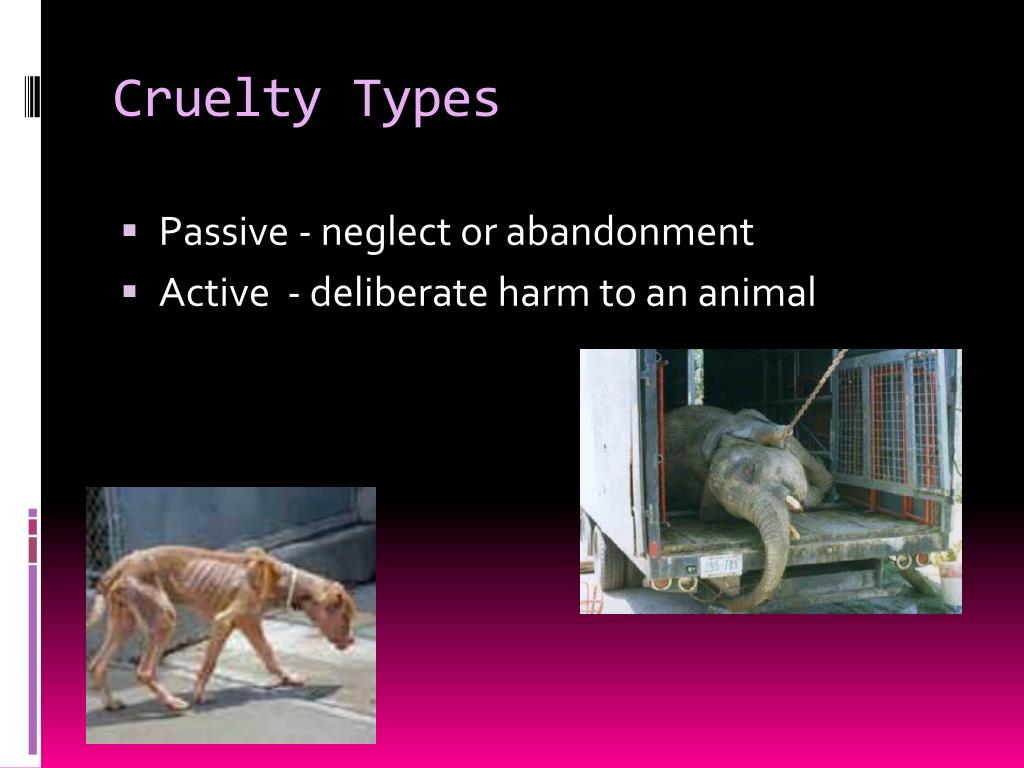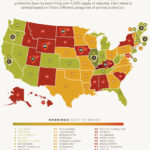Animal cruelty manifests in myriad forms, predominantly categorized into two distinct types: neglect and active abuse. Understanding these classifications is crucial for anyone interested in the welfare of animals, including policymakers, activists, and ordinary citizens. This article delves deeply into both types, elucidating their characteristics, implications, and consequences.
Understanding Animal Neglect
Neglect is typically characterized by a failure to provide for an animal’s basic needs. This can manifest in various guises, such as inadequate food, insufficient shelter, or lack of medical attention. In many cases, neglect arises from ignorance or a lack of resources. Pet owners may genuinely believe they are fulfilling their responsibilities, yet their actions—or inactions—result in significant harm.
One common form of neglect involves malnutrition. Animals left unfed or provided with subpar food may suffer from debilitating health issues. This could include stunted growth in younger animals or severe weight loss in adults. Malnutrition can lead to a myriad of conditions, including weakened immune systems, organ failure, and even premature death.
Environmental neglect presents another serious issue. Animals confined to cramped, unsanitary living conditions are often subjected to distressing circumstances. Whether it’s kennels overflowing with waste or pets left outside in extreme weather, the consequences can be dire. Exposure to the elements may lead to hypothermia, heatstroke, or diseases that flourish in unclean environments.
Moreover, medical neglect is a prevalent concern that may not always be immediately visible. Animals in pain or suffering from untreated illnesses often exhibit subtle signs that can be overlooked, yet these issues can lead to excruciating suffering. Without timely medical intervention, seemingly minor conditions can escalate into life-threatening situations.
Victims of neglect may exhibit behavioral changes ranging from extreme fearfulness to aggressive tendencies. These animals often bear emotional scars that extend beyond the physical damages inflicted by neglectful owners.
Active Abuse: A More Overt Form of Cruelty
In contrast to neglect, active abuse is characterized by intentional harm inflicted upon an animal. This can encompass a broad spectrum of behaviors including physical violence, psychological torture, or even sexual abuse. The motivations behind active abuse can vary, but they often stem from a desire to exert power and control over a defenseless creature.
Physical abuse is perhaps the most recognizable form of active cruelty. This can include beating, stabbing, or otherwise inflicting bodily harm. Such actions not only lead to immediate pain and suffering for the animal but may also leave lasting physical scars. Animals that survive severe physical abuse can develop profound trust issues with humans, rendering them incapable of forming normal, healthy relationships.
Psychological abuse, while sometimes less obvious, is equally damaging. This form of cruelty can manifest as isolation, intimidation, or persistent fear-inducing behavior. For example, when an owner continually reprimands or punishes an animal without cause, the resulting fear-driven behavior can lead to anxiety disorders and severe stress-related health issues. This emotional torment is often more difficult to detect than physical injuries, making it a challenging issue for animal welfare advocates to address.
Sexual abuse is another disturbing aspect of active cruelty, although it remains vastly underreported and often hidden from public view. The implications for affected animals are catastrophic, leading to severe physical injuries, psychological trauma, and alterations in social behavior. Animals subjected to such horrific acts may develop a pervasive mistrust of humans, making rehabilitation extremely challenging.
Societal Implications and Legal Concerns
Both neglect and active abuse reflect broader societal issues surrounding animal welfare. In communities where animal neglect is prevalent, it often signifies underlying problems like poverty or lack of education regarding responsible pet ownership. Conversely, communities with high rates of active abuse may also struggle with violence towards humans, suggesting a troubling interconnection between the treatment of animals and the fabric of society itself.
Legal frameworks aimed at combating animal cruelty vary widely across jurisdictions. While some regions have robust laws that explicitly define and penalize both types of cruelty, others may lack comprehensive legislation, allowing abusers to evade justice. In many cases, the enforcement of existing laws can be insufficient, underscoring the need for ongoing public advocacy and education.
Addressing animal cruelty effectively necessitates a multi-faceted approach. Individuals and organizations alike must work collaboratively to provide resources for education about neglect prevention and active abuse recognition. Community awareness campaigns can empower citizens to recognize the signs of cruelty, encouraging them to take action when they observe it.
Conclusion
Understanding the distinctions between neglect and active abuse is essential for forming a comprehensive perspective on animal welfare. Both types of cruelty pose severe threats to the well-being of animals, influencing their physical health and emotional states. By recognizing these forms of suffering, society can foster a culture of empathy and responsibility towards our animal companions, ultimately promoting a more humane world for all living beings.





